It is humbling to be a part of something big and help work towards answering the many questions there are about how the world works and our role within it. This summer I have had the opportunity to do that as a part of the Alaska NSF EPSCoR Fire and Ice project. EPSCoR Fire and Ice aims to study climate-driven changes in wildfires and coastal ecosystems in Alaska. Brenda Konar and her crew, which I am lucky to be a part of, conducts research as part of the Coastal Margins team. My amazement of this project stems from the vast range of topics integrated into one larger scheme of how coastal environments change along glacial gradients in Alaska. These questions are studied across two regions: Kachemak Bay in the northern Gulf of Alaska and Lynne Canal in Southeast Alaska, each containing five sites. In order to capture a full picture of how climate-driven glacial melt is affecting Alaska’s coastal environment, the Coastal Margins team studies estuarine geology, intertidal community ecology, fish biology, oceanography, and ocean acidification and other water characteristics (sedimentation, light, salinity, temperature, etc).
Our crew conducts intertidal sampling once a month at the beginning of the month. Over my 8 weeks in Alaska, I will be assisting with two of these sampling events. The timing of these sampling events is crucial because intertidal work relies heavily on low tides. One of the main components of our sampling is in the rocky intertidal where you can find mussels, barnacles, and the alga, Fucus sp., as dominant species. The sampling consists of clearing quadrats for species composition and biomass, assessing percent cover, and collecting and replacing larval recruitment plates and tuffies.
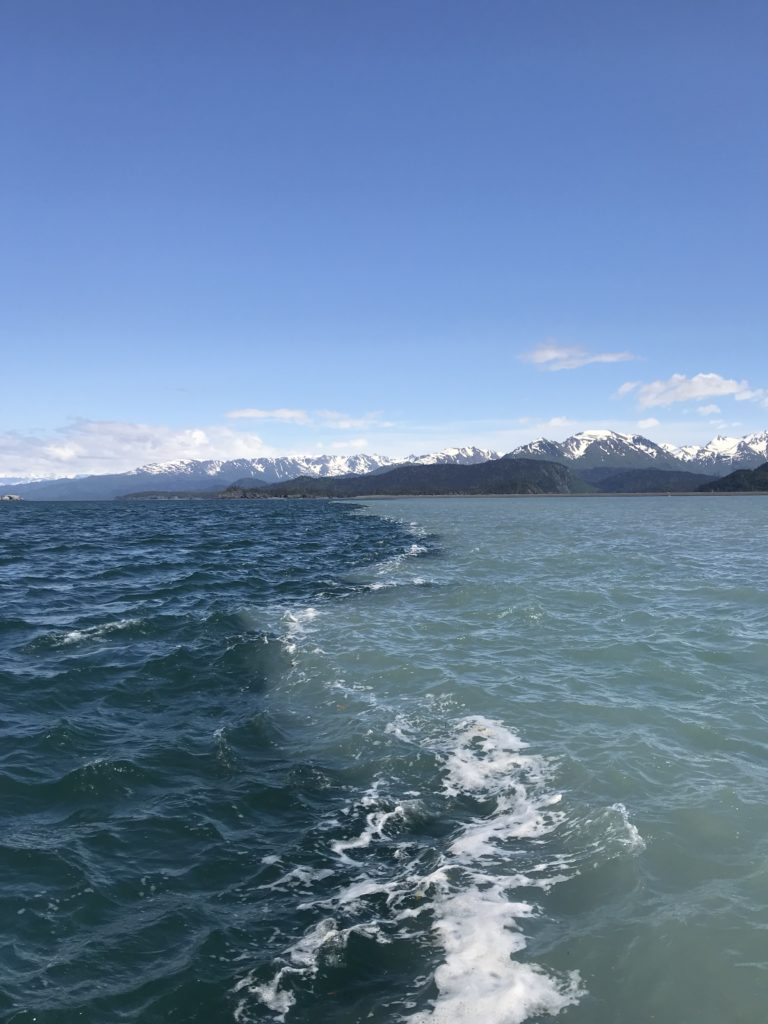
The line where oceanic water and water containing glacial till mix near the Grewingk Glacier sampling site.
While our group specializes in intertidal ecology, we help out with other components then send off the samples and data to where other team members are stationed. One of the other components to the project is fish seining. At each site, we beach seine and count, identify, and measure all fish that are caught. In addition to learning how to properly beach seine, this gave me the chance to learn a few of the fish species in Alaska.
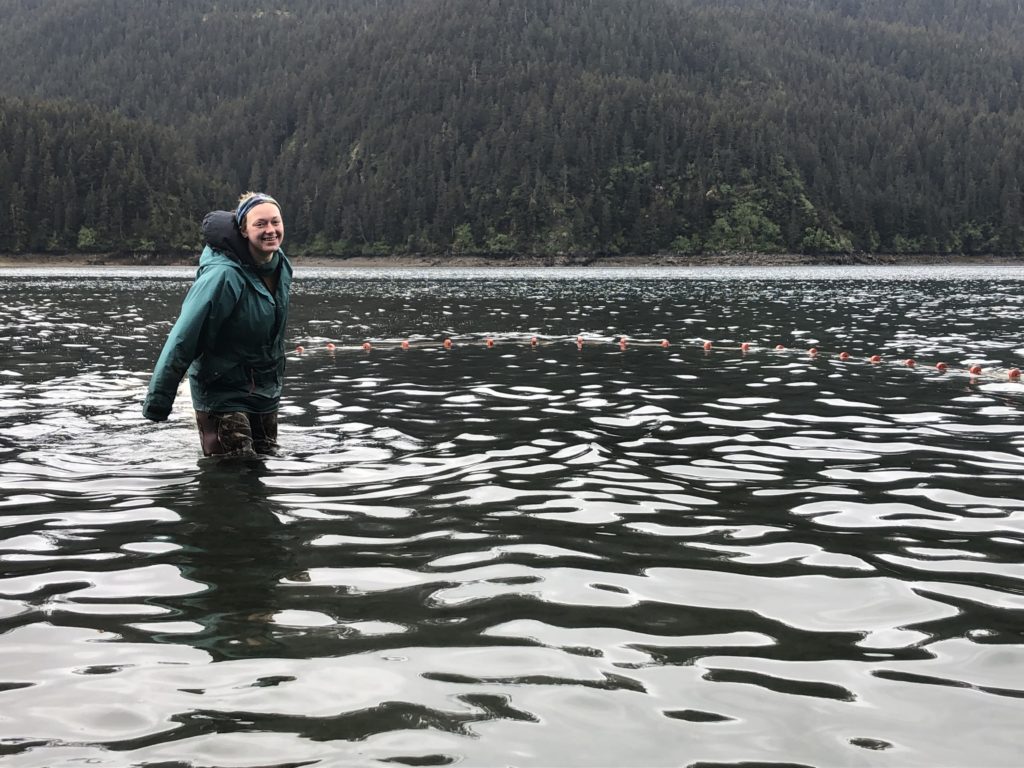
Fish seining!
Another component of the project our group helps with is taking water quality samples and conducting zooplankton tows. While water quality data collection was as simple as filling containers and taking YSI measurements, zooplankton tows required a bit more equipment. Zooplankton collection required using both ring nets and tucker trawls in order to collect zooplankton from different layers in the water column and using a CastAway to examine water characteristics.
To complement biological oceanography with physical oceanography, we launched drifter buoys into Kachemak Bay. Drifter buoys are essentially buoys equipped with GPS and temperature sensors that are attached to underwater sails that are caught by ocean currents. These drifters allow for the oceanographic modelling portion of the EPSCoR project. We launched four buoys a handful of times and could track their movements across the launch timeframe in order to see how currents circulate within Kachemak Bay.
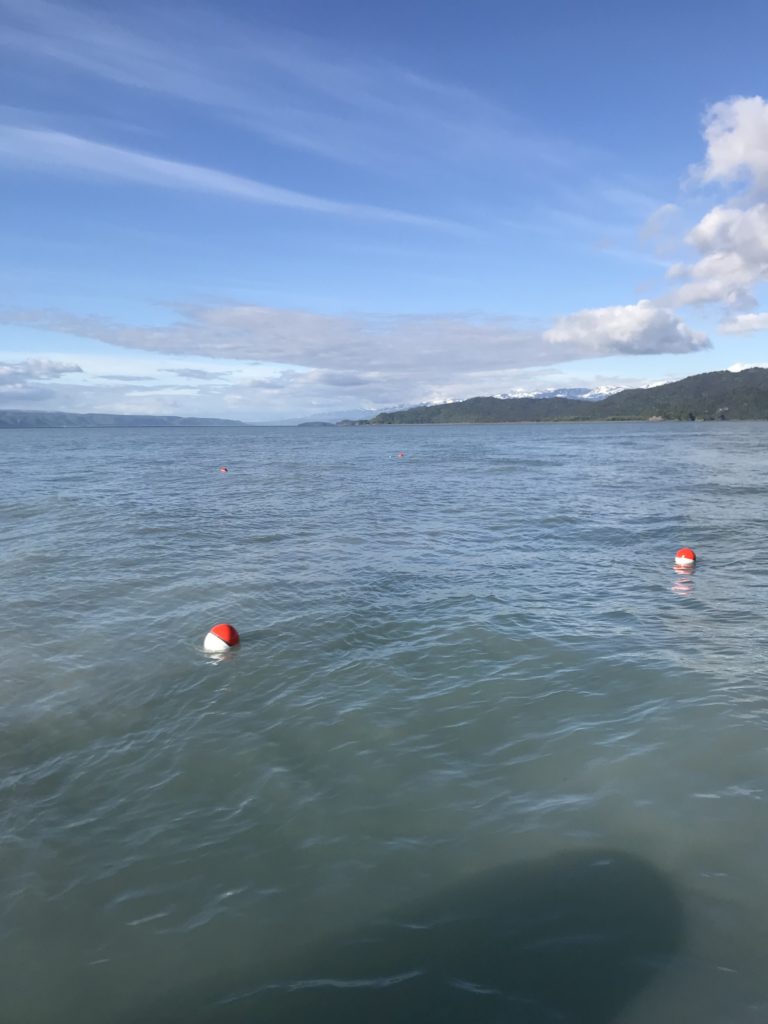
Drifter buoys floating in the bay post-launch.
Launching drifter buoys also means finding drifter buoys at the end of each launch cycle. Searching for these buoys was like playing “Where’s Waldo” in a bay full of orange buoys. It is safe to say that all of the buoys were successfully found after every launch.
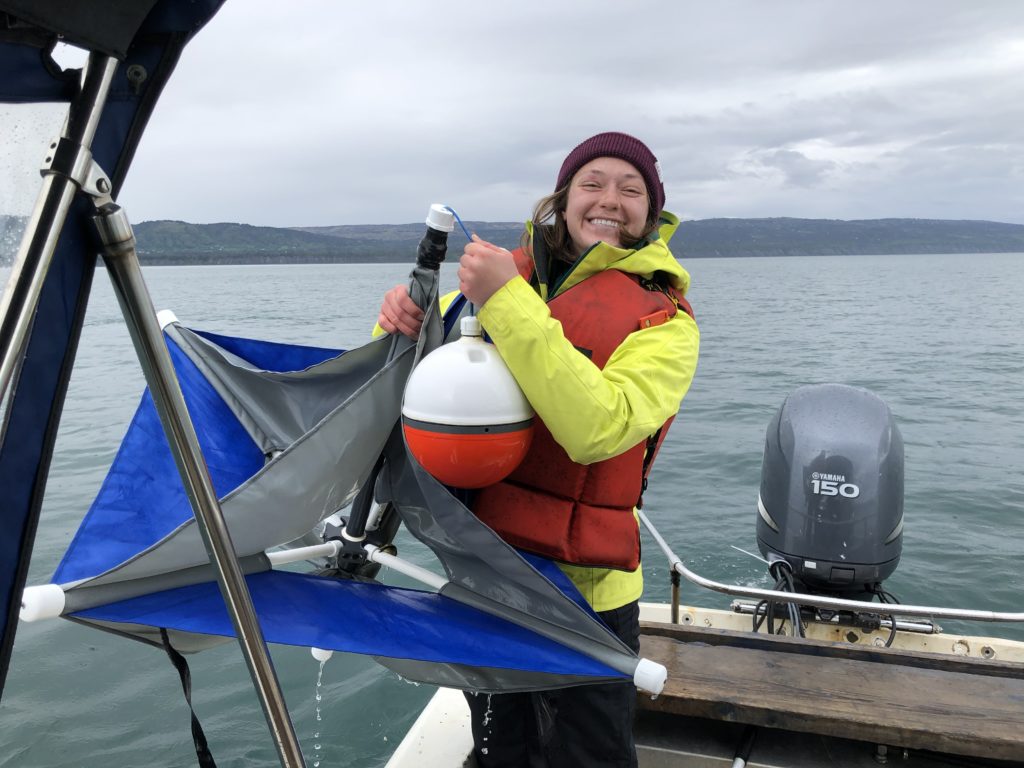
It was an exciting feat to find each and every drifter buoy.
The final portion of EPSCoR that we conducted was diving on the sensors at each of the five sites and collecting subtidal community ecology samples. At each site, there are sediment traps; temperature, dissolved oxygen, depth, and salinity sensors; and a tilt meter (for current speed and direction). Each month, these sensors are switched out in order to download data collected over the previous month. Typically, this requires diving in order to access the sensors. However, Kachemak Bay has almost a 10 meter tidal exchange making it possible to access some sensors from the shore at low tide.
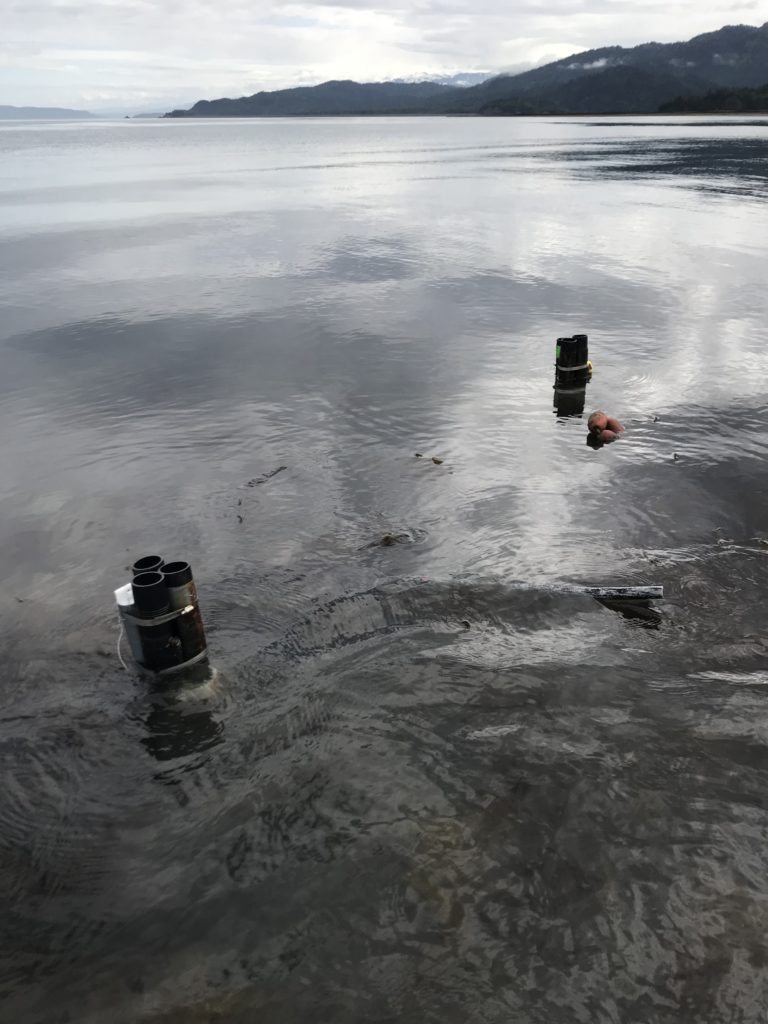
Sediment tubes connected to sensors peeking out of the water at low tide.
In addition to switching out sensors, we also collected subtidal community samples by clearing contents within quadrats. Even if sensors were accessible at low tide, clearing quadrats for samples often required diving in order to collect a proper sample. This has been an especially exciting portion of the project for me because I will be working with these data and presenting a poster at the Alaska Marine Science Symposium in January on variation in subtidal community ecology along a glacial gradient. Specifically, my project aims to identify patterns in subtidal communities associated with the glacial gradient.
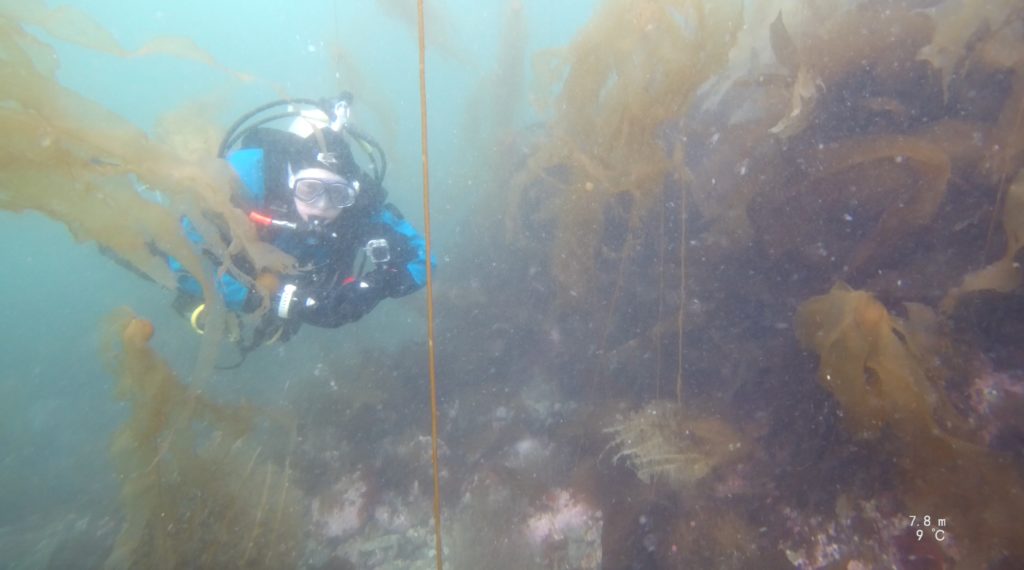
Diving in a kelp forest near Hesketh Island.
Lots of sampling also means lots of samples to work through in the lab. The past few weeks have been full of sieving and sorting through intertidal biomass samples and hours at the dissecting microscope identifying larval recruits.
I had the opportunity to change modes from intertidal community ecology to marine birds and mammals for a few days while assisting USGS (U.S. Geological Survey) with work for Gulf Watch Alaska. Marine bird and mammal surveys are conducted each year along much of the Kachemak Bay coastline. It was a great chance to see another side to marine ecology as well as coves and bays in Kachemak Bay that I had not seen before. To round out these surveys and encompass different taxa, there was also a fish component that required hook and line fishing. Catching my first fish, seeing a pod of orca whales, and spotting an otter eating a huge octopus were highlights of the week!
It is hard to put into words how incredible my time in Alaska has been so far. I have learned so much about intertidal and subtidal ecology and a wealth of new field sampling techniques. I can’t wait to keep learning and get back into the water as we delve into the next month of EPSCoR sampling next week! Just to make sure we still need dry suits up here in Alaska, we all jumped in to test the water. Although summer is in full swing in Alaska, I am confident in saying that we will be bundling up in suits, gloves, and hoods next week!
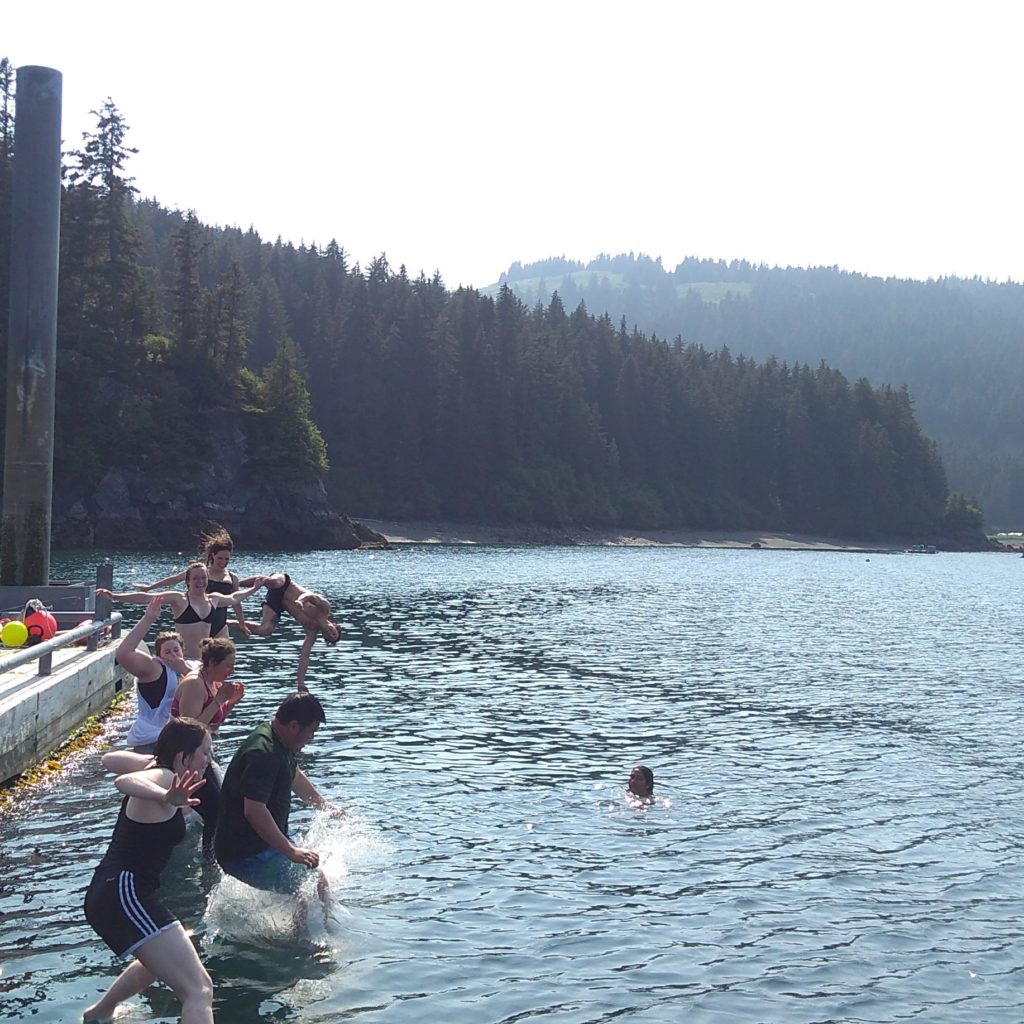
Celebrating the end of a successful field season of some colleagues with a jump in the water.

